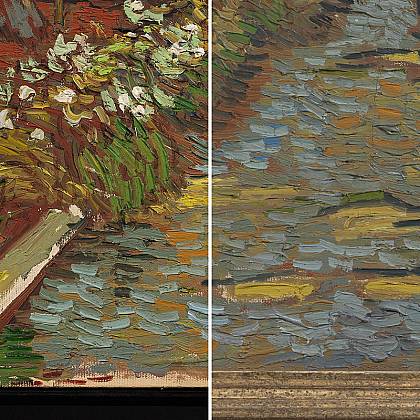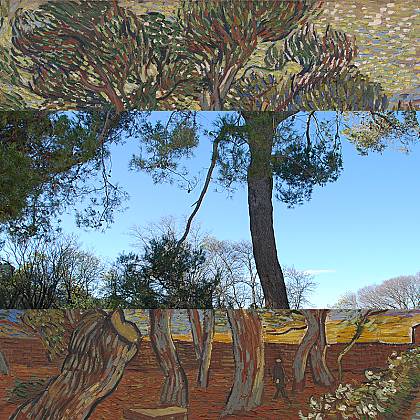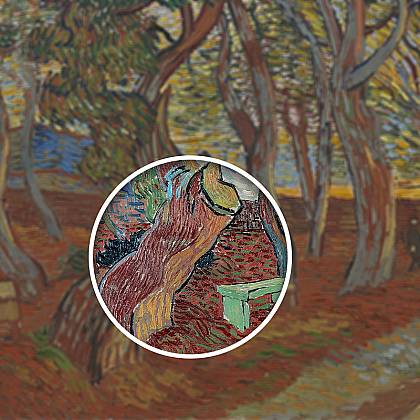The colours of anxiety
Garden of the Asylum
Garden of the Asylum was more than an impression of the atmosphere in the garden. Van Gogh intended the colours and style to communicate a sense of fear and disappointment:
This combination of red ochre, of green saddened with grey, of black lines that define the outlines, this gives rise a little to the feeling of anxiety from which some of my companions in misfortune often suffer.
Letter to Emile Bernard. Saint-Rémy-de-Provence, on or about Tuesday, 26 November 1889.
This was a response to the paintings that his fellow artists Paul Gauguin and Emile Bernard were working on at the time, such as Bernard’s Christ in Gethsemane.
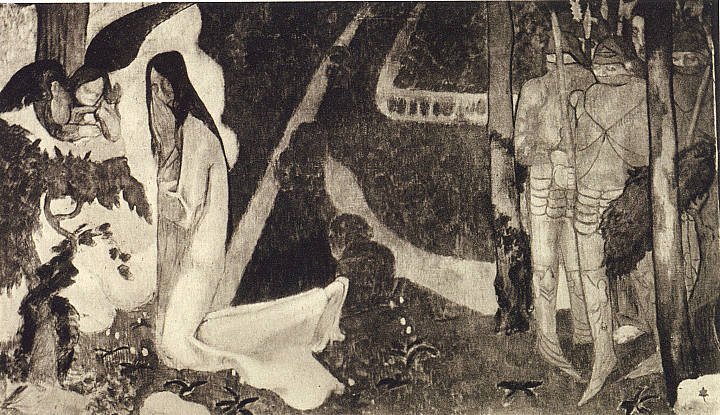
Emile Bernard, Christ in Gethsemane, 1889
black-and-white photograph of the painting
present location unknown
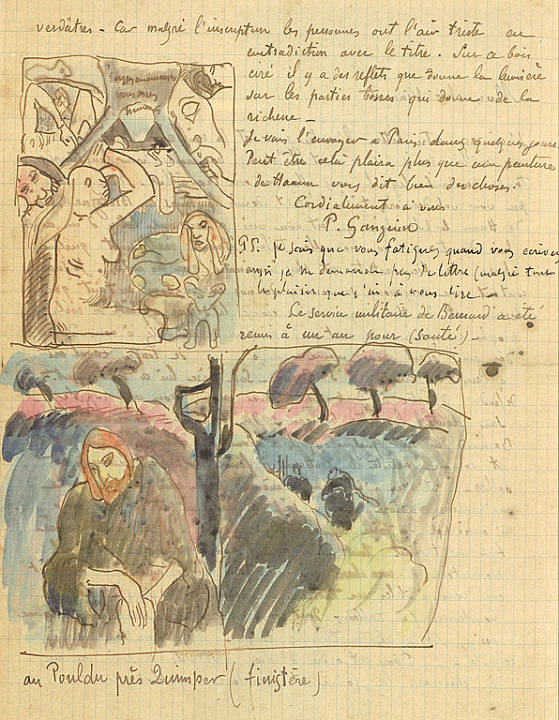
Bernard and Gauguin sent Van Gogh sketches of their work.
Letter with sketches from Paul Gauguin to Vincent van Gogh.
10-13 November 1889
Van Gogh Museum, Amsterdam (Vincent van Gogh Foundation)
Reality versus imagination
Van Gogh was upset when he saw how Gauguin and Bernard had depicted the biblical theme of Christ in the olive grove. He believed that there was no need to use biblical scenes to express existential anxiety, and he presented his Garden of the Asylum as an example.
Van Gogh wrote that it was fine to draw inspiration from the Bible:
Modern reality has such a hold over us that even when trying abstractly to reconstruct ancient times in our thoughts — just at that very moment the petty events of our lives tear us away from these meditations and our own adventures throw us forcibly into personal sensations: joy, boredom, suffering, anger or smiling.
Letter to Emile Bernard, Saint-Rémy-de-Provence, on or about Tuesday, 26 November 1889.
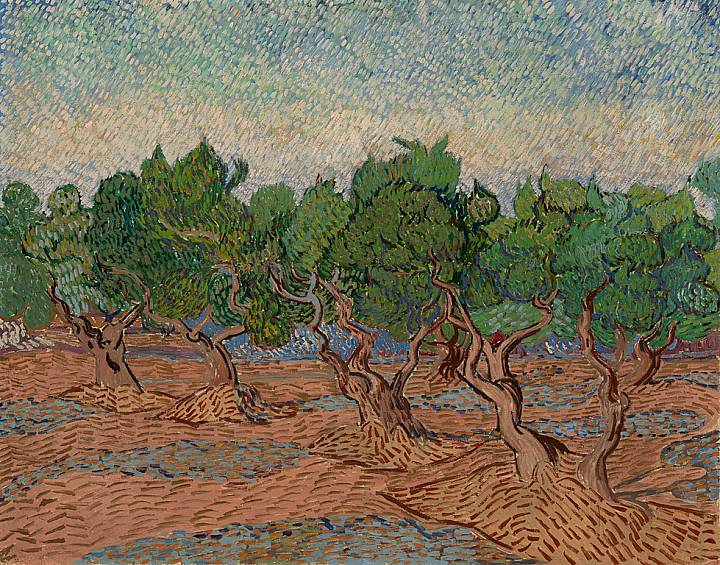
Van Gogh believed that observation of reality should always be an artist’s point of departure. He claimed that you could still express powerful emotion with expressive colours and an experimental brushstroke. For example, he painted olive groves with the story of Christ in the back of his mind. This was his response to Bernard and Gauguin’s religious paintings.
Olive grove, 1889
Van Gogh Museum, Amsterdam (Vincent van Gogh Foundation)
